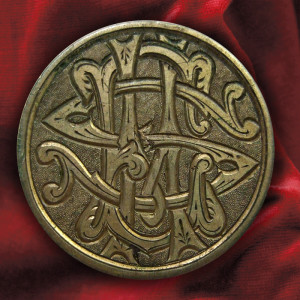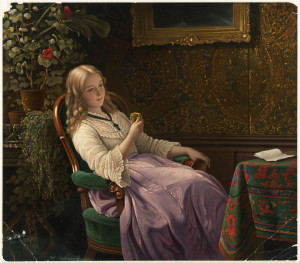Though popular numismatic collectibles, love tokens are actually not ‘tokens’ at all
The term “love tokens” could mean many different things to many different people, but numismatically speaking, love tokens are legal tender coins that have been rubbed or sanded smooth on one or both sides – hand-engraved with initials, monograms, names, patterns or pictorial scenes – and often embellished with an ornate border. Intended as expressions of esteem or affection, the designs might include such symbols of love as a heart pierced with an arrow, Cupid’s bow and arrow, flowers, love birds or lovers’ knots. Most were created during the 18th and 19th centuries in Great Britain, Germany, Canada and the United States by skilled engravers or jewelers – though many were etched by amateur craftsmen as well.
While love tokens are popular numismatic collectibles, and certainly “tokens of love,” these creations are really not “tokens” in a numismatic sense. Krause Publications’ International Encyclopedic Dictionary of Numismatics defines a token as “a coin-like object used in lieu of legal tender coins to compensate for goods or services.” So to a numismatist, tokens are not and never were official coins, while love tokens are altered legal tender issues. But make no mistake – both tokens and love tokens are prized collectibles, and both categories add numismatic and historical interest to any collection!
Each hand-engraved love token is unique
The authoritative Love Token Society has proclaimed two basic requirements for a love token: “the engraving must be on a legitimate coin (i.e. coin of the realm)” and “the engraving must be done by hand.” The second criterion is as significant as the first, because hand engraving means that each love token is unique. Can you imagine owning the only coin of its kind in the world? No wonder love tokens are such an intriguing collecting specialty!
Those who could afford it had love tokens created from silver or gold coins, while those who could not would use copper or bronze coins. British love tokens were often engraved on bronze farthings and silver three pence coins. When love tokens became popular in the United States during the emotion and fervor of the Civil War era, Seated Liberty dimes and quarters struck in 90% silver were most often used. Silver coins were softer and easier to engrave than nickels, and they made more precious gifts than bronze cents. However, love tokens were created from every denomination of the era, from half cents to $20 gold pieces.
Collector values can vary widely

Love Token Photo Credit: By Jerry “Woody” from Edmonton, Canada (19th Century Love Token Engraved on 1841 Thaler) [CC BY-SA 2.0], via Wikimedia Commons
There are also variations on the usual practice. A significant number of copper and nickel love tokens were gold plated to make them look like their more precious counterparts. And the original designs on some coins were unaltered, with special engravings added to smooth surface areas between or adjacent to the usual images and inscriptions. Some love tokens feature holes for attachment to bracelets, necklaces or watch chains, while many other love tokens were mounted on pins to wear them on clothing.
The engraving of love tokens continued throughout the sentimental Victorian Era and for the most part came to an end around the turn of the 20th century. The workmanship and artistry on many of these creations is quite extraordinary, and love token enthusiasts have assembled some beautiful collections.
While some dealers specialize in love tokens and advertise their interest in purchasing them, coin dealers like Littleton are apt to have love tokens in stock only when acquired with a varied collection of coins and other numismatic items.





i have a 1877 indian head penny that is F15 on the obverse but a love token on the back. Does it keep any of the 1877 value?
Dear Shawn, Unfortunately, now that the 1877 Indian Head Cent has been altered or made into a love token, it does not retain its original numismatic value.
Hello, Is there anyway to find out whose initials are on the love token? I have a Republica Mexicana on one side and beautiful design on the back with the initials MJC on the other. I would love to know the history behind the token. Thank you for any information you can provide. Kim D.
Hi Kim, Unfortunately, there isn’t really any way to know who’s initials are on your token. It could be the person who made the token or maybe the initials of someone the artist knew. Definitely a very cool conversation piece though! Have a good day! -Rick